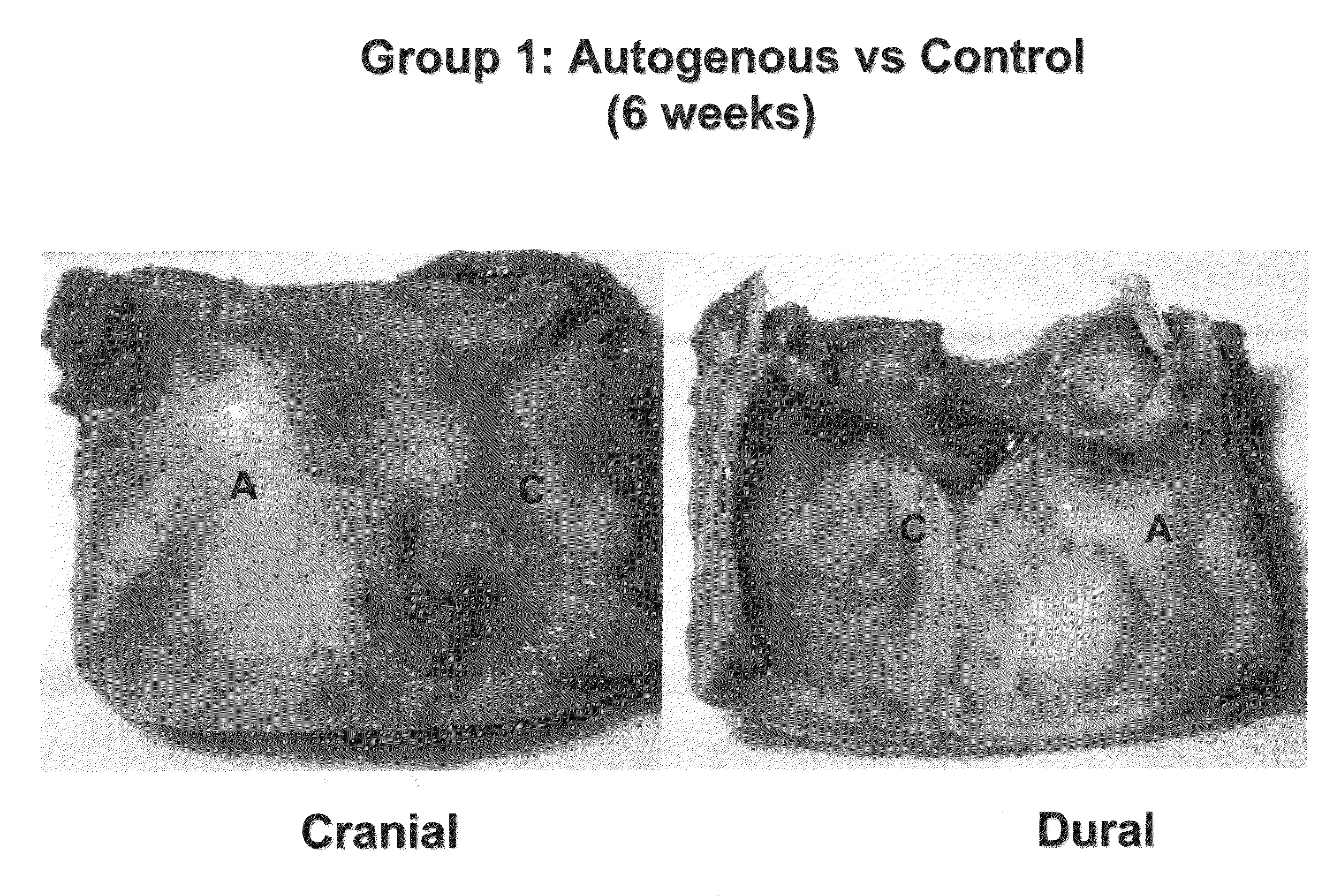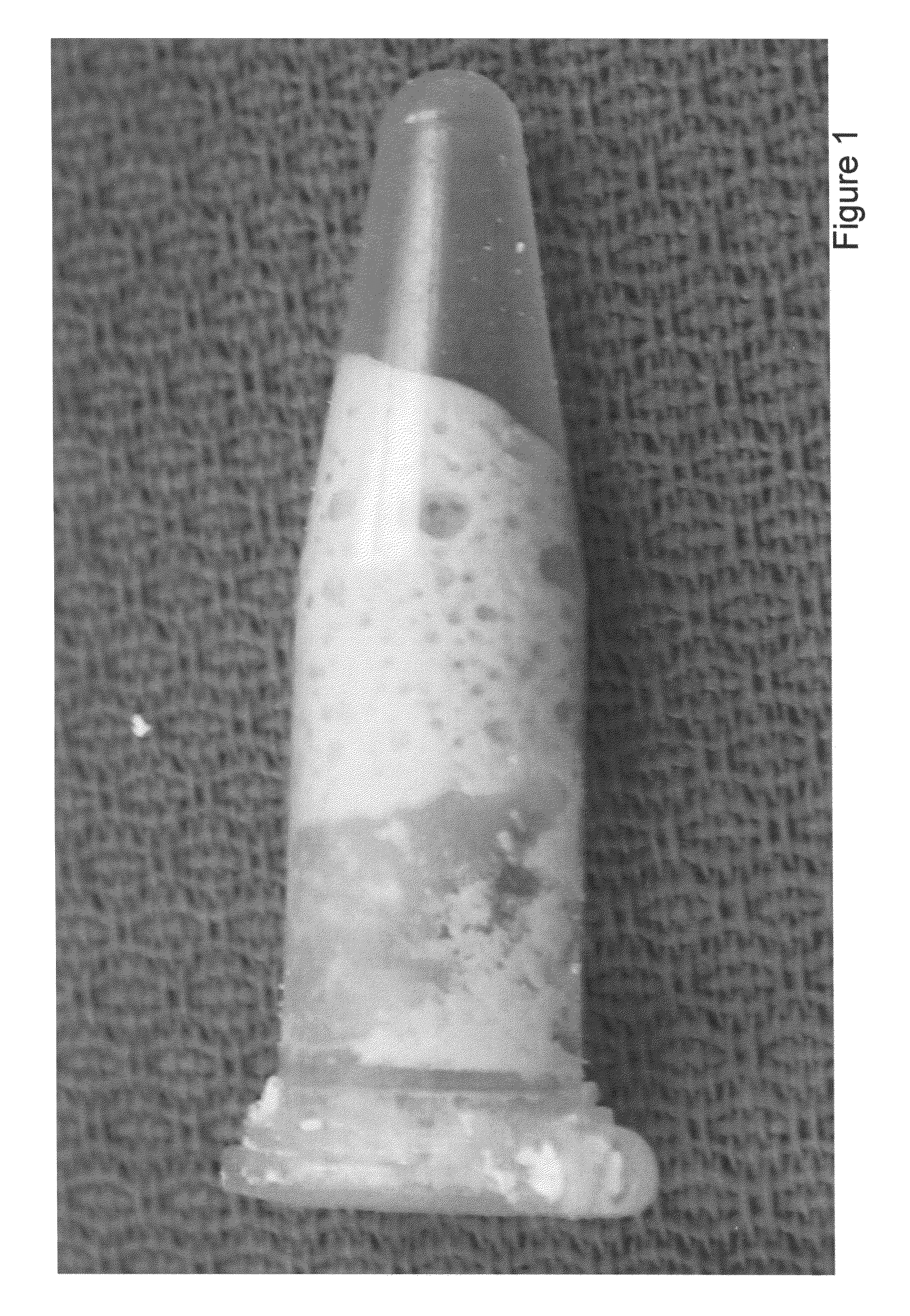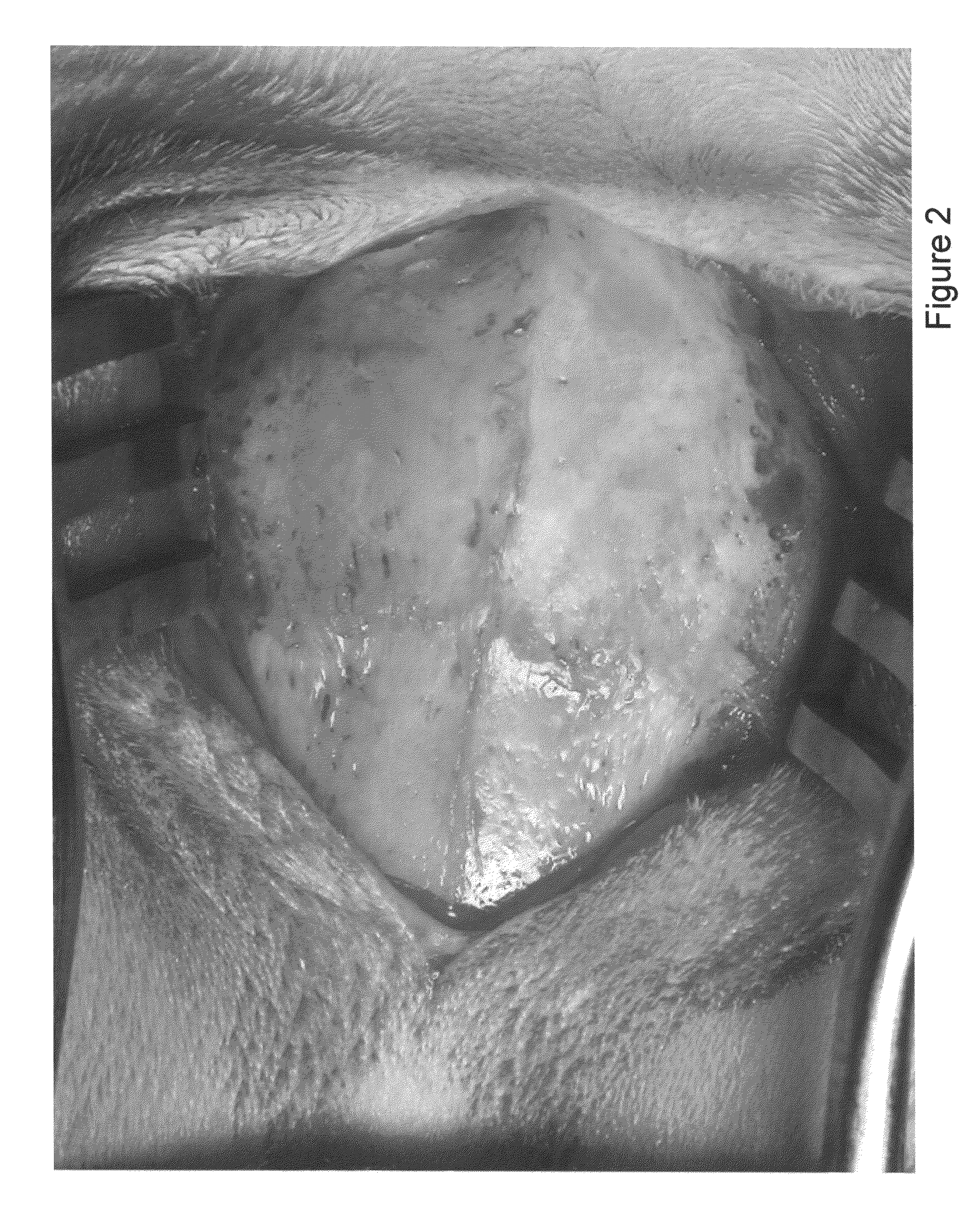Moldable paste composition
a paste composition and moldable technology, applied in the field of paste composition, can solve the problems of reducing the viscosity, hardening the application, and not optimizing the potential to promote bone growth and connective tissue repair, and achieve the effect of facilitating the development of bone tissu
- Summary
- Abstract
- Description
- Claims
- Application Information
AI Technical Summary
Problems solved by technology
Method used
Image
Examples
example 1
Experimental Design:
[0065]
Animals:50 New Zealand White male rabbits weighing 3.5-4.0 kg weredivided into 5 groups (n = 10) and were sacrificed at 6weeks. Bilateral 15 mm diameter critical sized defects werecreated in the parietal bones of each animal (FIGS. 2 to 4).Groups:1) The first group (n = 10) had defects in one side leftunfilled. The other side was filled with autogenousparticulate bone harvested from the cranium (FIGS. 8 and 9).2) The second group (n = 10) had defects in one sidefilled with Product 1 while the other side were filled withProduct 1 + carrier (FIGS. 10 to 16).3) The third group (n = 10) had defects in one side willbe filled with Product 1 + carrier. The other side wasfilled with Product 1 + carrier + BMP (FIGS. 17 and 18).4) The fourth group (n = 10) had defects in one side willbe filled with Product 2. The other side was filled withProduct 2 + carrier (FIGS. 19 to 25).5) The fifth group (n = 10) were defects in one side willbe filled with Product 2 + BMP. The ...
example 2
[0070]The aim of this study was to develop and to test in vivo handling, setting and osteogenic properties of injectable bone substitute materials by combining specific granules of BCP with or without radiopaque elements with a thermo sensitive resorbable inert carrier such as Pluronic® F127 (Pluronic, BASF, Mt. Olive, N.J.) [2]. The composite is liquid at ambient temperature and set as hydrogel at 37° C.
Experimental Design:
[0071]Three different rounded BCP granules bioceramics were prepared in the range of 80-200 μm. Rounded granules were prepared from calcium deficient apatite (CDA) with or without Barium sulphate radio-opaque. The sintering involved crystallization of BCP with different HA / TCP ratios (60 / 40 and 20 / 80). Sixty percent (60%) in weight of BCP granules were mixed with Pluronic®F127 (A: 60 / 40 BCP, B: 20 / 80, C: 60 / 40 with Barium). Fifteen (15) New Zealand rabbits were used. Bilateral 6 mm intra-femoral epiphysis bone defects were totally filled by composite. Lumbar musc...
PUM
| Property | Measurement | Unit |
|---|---|---|
| weight percent | aaaaa | aaaaa |
| weight percent | aaaaa | aaaaa |
| weight percent | aaaaa | aaaaa |
Abstract
Description
Claims
Application Information
 Login to View More
Login to View More - R&D
- Intellectual Property
- Life Sciences
- Materials
- Tech Scout
- Unparalleled Data Quality
- Higher Quality Content
- 60% Fewer Hallucinations
Browse by: Latest US Patents, China's latest patents, Technical Efficacy Thesaurus, Application Domain, Technology Topic, Popular Technical Reports.
© 2025 PatSnap. All rights reserved.Legal|Privacy policy|Modern Slavery Act Transparency Statement|Sitemap|About US| Contact US: help@patsnap.com



